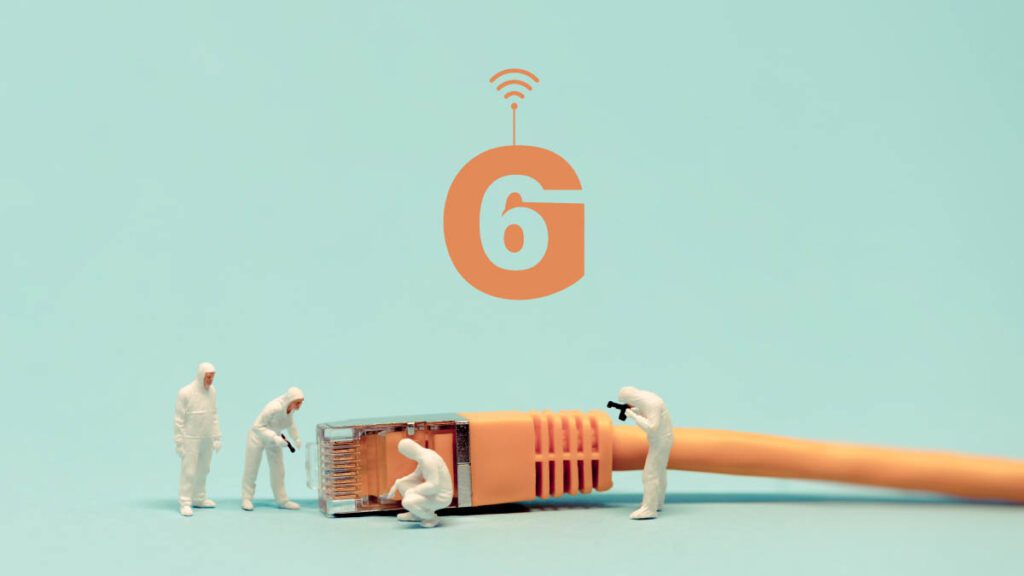
By Roger Nichols, 6G Program Manager, Keysight Technologies.
The end of 2020 will see only 2% of the world’s 8 billion mobile subscriptions as 5G.
But, even though the vision for 5G is still far from being realised, the time required to develop a new generation of wireless means that work on 6G has already started.
The early work in 5G set the stage for developing a technology based on a user- and society-centric view; those working on 6G follow this example. Whitepapers from the ITU, Samsung, Docomo, and the University of Oulu, describe futuristic use cases and network attributes. Traditional key performance indicators (KPI) include data rates to 1Tbps, mobility of 1000 kmph, and latency of 0.1ms. New KPI’s include precision and accuracy of timing (“in time” and “on time” communications) and the ability to pinpoint location to centimeters.
I am often asked what design and testing will be like for 6G and I believe I can anticipate a few things:
- Testing will happen in both traditional and new domains.
- Test technology and solutions will evolve over time.
- Complex system-level validation for the entire system will take an even bigger role than in previous generations.
With history as an indicator, it is safe to say that this will take some time. Automated mobile radio systems were conceived in the early 1970s building upon frequency reuse concepts patented by Bell Labs in the late 1940s. NTT launched first commercial system in 1979, followed by the Saudi and Nordic launches of NMT in 1981, and then by AT&T’s 1983 launch of AMPS in the USA. Each subsequent generation has launched at one-decade intervals.
Mobile wireless first enabled us to carry our phones anywhere, and now allows our office, education, and entertainment to be anywhere. The next step is for 6G to become an integral part of society. The industry puts contstant pressure on the state of the art of affordable technology.
That same pressure also drove the evolution of test and measurement requirements. We started with considerable focus measuring radio physics: power, sensitivity, and interference issues. Now we measure things like scheduler efficiency and even “quality of service” (QoS). 5G will bring system-level issues related to requirements for security, reliability, latency, and system power consumption. The increasing demands from industry and society, required simulation, design, measurement, and validation to evolve from physics related to voice and data performance, and then to system performance.
Societies and governments are paying close attention to 5G with special interest in public safety, information security, and national interests. This implies design and validation requirements, not just for new physical attributes – like time-precision and jitter, but also for system wide attributes including service level agreement (SLA) adherence and “quality of experience” (QoE). In 6G, we can even foresee policy-driven requirements for system level performance.
Some of these changes are visible to us now as we help our customers with 5G technology. However, we also get questions like: How can I validate what I am providing in my SLA with my customer? What is causing the problems with voice quality? How can we ensure mobile games run properly in the network and on specific mobile devices? What level of security can be guaranteed?
6G will drive new technical demands in five major areas:
- Next generation radio
- Integrated heterogeneous multi-radio access technology (RAT) systems
- Time engineering in networks
- AI based networking
- Advanced security
All but the first of these will have to be validated from the physical level to the system level.
As mentioned above, governments around the world are engaged in intense dialog on 5G as it relates to security and national interests. Regional and community governments are developing local ordinance related to mobile device usage, cell siting, and electromagnetic exposure. Also, earlier in the 5G lifecycle than in previous generations, departments of defence are exploring the use of 5G for their needs.
If you still have your doubts about the impact of policy, consider early radio history: the universal call of distress: S-O-S was not always the standard. These three symbols, which were chosen because of their simplicity and ease of distinction, were standardised at the International Radio Telegraph Convention of Berlin in 1906. The Titanic disaster in 1912 led to the standardisation of not only a common distress radio channel, but also international maritime law stipulating that all shipboard radio telegraph offices had to be staffed at all times. So, we have early policy already dictating 1) message types, 2) radio channels, and 3) behavior. With radio systems a fundamental part of society, we can expect to see more.
About the Author

Roger Nichols
5G and 6G Program Manager
Keysight Technologies
Roger Nichols’ 35 years of engineering and management experience in wireless test and measurement at Hewlett-Packard, Agilent Technologies, and Keysight spans roles in manufacturing, R&D, and marketing. He has managed programs, projects, and departments starting with analog cellular radio, evolving to 5G, and on every standard in between. He has been directing Keysight’s 5G, and now 6G programs since 2014. He is also directing Keysight’s wireless standards strategies.
Roger holds a BSEE from the University of Colorado, Boulder.